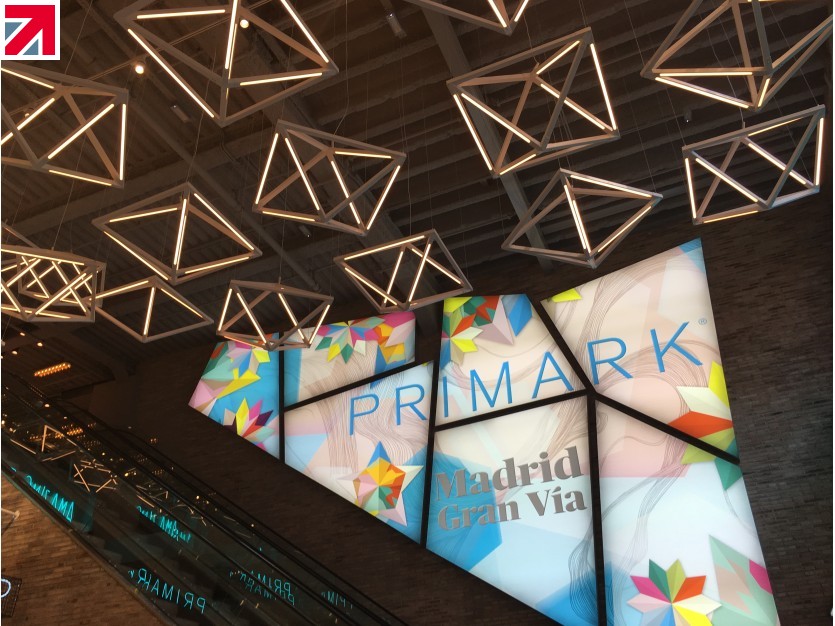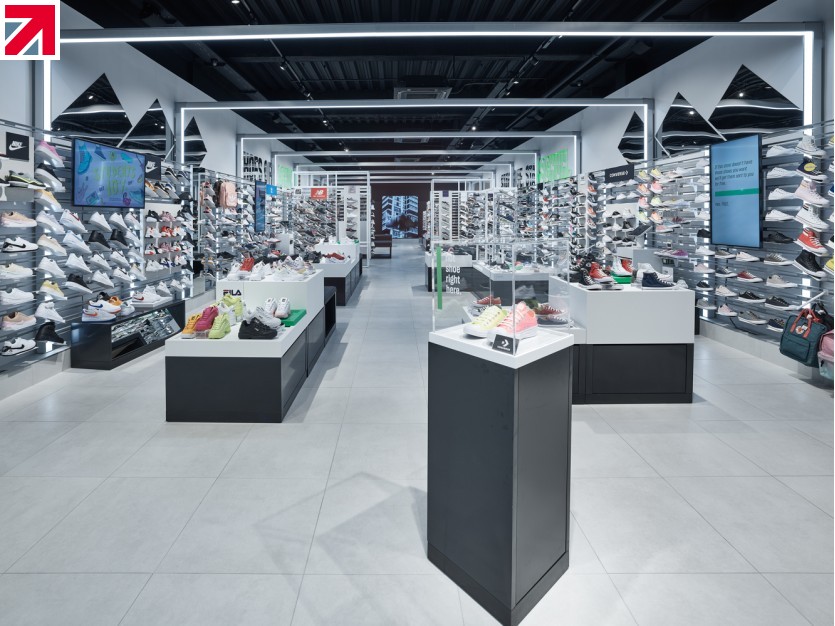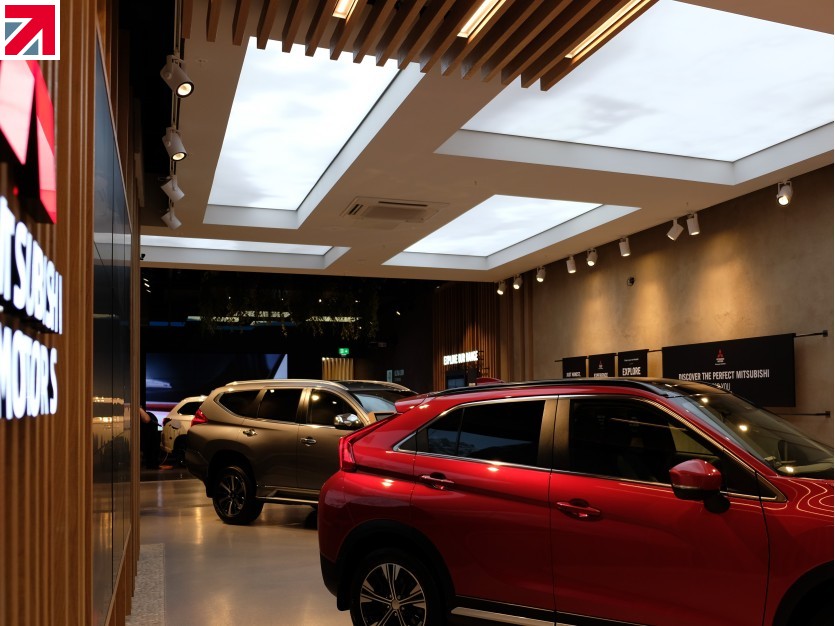Light is essential for human life, we all know that to be fact. But, what is the importance of light in relation to retail displays? And, can different types of lighting determine the effectiveness of a retail environment at attracting customers and generating sales?
In today’s ultra-competitive markets, retailers need to consider how they want their customers to feel when they visit their store. Several factors can affect this, including the layout of the store itself, the music being played, the interior design schemes and the colour scheme. A factor that has been overlooked in the past is the types of lighting in retail stores, however, this is now seen by many as the most important factor to be considered.
“Lighting has a direct influence on our mood, with 80% of the sensory information the brain receives coming from our eyes. Lighting highlights architectural elements, product qualities and creates virtual spaces – impacting how we feel, what we think of a product, and ultimately the choice of whether to purchase or not.” - Mihaly Bartha, Head of Lighting at GPStudio
The use of light in retail stores must be considered at each stage of a customer’s journey. The type of lighting that is most appropriate for the entrance of a store will be different to that which is best suited for use in changing rooms and payment areas, all because our emotional and cognitive responses to a given space are impacted massively by the ways in which it is lit. From the colour temperature of the LEDs used, through to the intensity of the light that is emitted by a light source, retailers must take a number of different things into consideration if they are to ensure that their store lighting is conducive to increasing footfall, showcasing products effectively and generating sales.
Types of Retail Lighting Techniques
There are four main types of lighting – ambient lighting, task lighting, accent lighting and decorative lighting. But what are they, and what do they mean in the context of retail environments?
Ambient Lighting
Ambient lighting is also called general lighting. It’s the most basic of the four types of lighting and refers to the natural light from windows as well as the lighting fixtures that are used to supplement natural light and deliver adequate illumination into a space so that people are able to use it effectively. Ambient lighting fixtures include ceiling lightboxes, chandeliers, track lights, recessed or suspended luminaires and LED downlights.
In the context of retail design, ambient lighting ensures that customers have enough light to feel comfortable when inside a store and that they can actually browse the products on display. If a store appears to be too dark, brands can risk creating an environment in which shoppers feel claustrophobic and are unable to read product descriptions, item sizes and price labels. On the other hand, if a store is too bright, retailers can find that their customers feel that they are in a clinical environment and unable to relax.
Factors that need to be taken into consideration when specifying ambient lighting systems for retail spaces include the size of the space (larger stores will need more ambient lighting fixtures to achieve adequate illumination than smaller stores) and the identity of the brand in question (high-end retailers may prefer to have lower levels of ambient light as it is associated with luxury and intimacy).
Task Lighting
Task lighting refers to light sources that are used to illuminate the tasks a person carries out in a given space. These may include things such as reading, cooking, applying make-up or working. Types of task lighting fixtures include floor and desk lamps, angled spotlights, counter lights, cabinet luminaires and pendant lights.
Task lighting is a more focused technique in retail and is used in areas of a store where more light is needed to perform certain tasks, for instance in changing rooms or at checkout areas. Without adequate task lighting, shoppers may not be able to appreciate the colours and textures of clothing items in the mirrors of fitting rooms and may struggle when paying for goods or services if they find that they are unable to see the numbers on a card reader.
Task lighting is also a highly effective way of highlighting a store’s sign and the entrance area so that it is fully visible to customers even at a distance.
Accent Lighting
Accent lighting is used to create a sense of atmosphere in a given space and influence the mood of its users. It is also an effective way of highlighting specific architectural features within interior and exterior environments and can even be used to draw attention away from any areas which may not be as aesthetically pleasing. As a general rule, effective accent lighting requires the installation of three times more light on the desired focal point than the ambient lighting provides. This can be achieved by specifying LED lights with higher lumen outputs.
Within the context of store design, accent lighting is an excellent way in which retailers can highlight seasonal products and direct the attention of shoppers towards specific product ranges or shelving displays. Accent lighting is also ideal for use in window displays since it visually emphasizes your products and helps to entice people into a store.
Decorative Lighting
Decorative lighting is mainly used to enhance the look and feel of a space. Within store environments, it does this by creating an atmosphere that reflects seasonal trends, brand identities and customer preferences through the use of things such as festive lights and illuminated signage.
Even though it is not used to provide the light levels that are required to ensure a space is functional, decorative lighting is essential for ensuring that a space is experienced in a particular way. For example, it can be used to invoke feelings of nostalgia feelings, create illuminated logos and subtly reinforce a brand’s overall identity.
Why Is Lighting So Important In Retail Environments?
There has been a lot of research carried out into the importance of lighting in retail environments and on the impact it has on the behaviours and moods of shoppers. For example, a study by the Lighting Laboratory at Sweden’s Royal Institute of Technology revealed that:
- Consumers generally prefer warm lighting and moderate levels of brightness over cold, harsh lighting.
- Brighter lighting systems are more effective when used within shop windows as they attract the attention of passers-by.
- Vertical lighting fixtures are more effective than horizontal ones when helping to ensure that products stand out from their immediate surroundings.
- A variety of different lighting systems are the most visually appealing and stimulating when used in conjunction with one another as our eyes are naturally drawn to areas of contrast.
- Altering the colour temperature and intensity of retail lighting according to the time of day ensures that customers feel more comfortable when browsing.
Conclusions
Lighting is one of the most influential factors in determining the success or failure of a given retail space. Retailers must use a variety of different lighting systems strategically to ensure that they are able to entice shoppers into their stores, create environments that are equipped to facilitate sales and communicate their brand’s identity to customers.
To learn more about the principles of retail lighting, or to speak to a member of our team about how to go about designing a lighting system that is optimised to perform in your retail space, contact us here.
Find out more about Unibox on their member profile page here
Member-created content 3 years ago | From members




